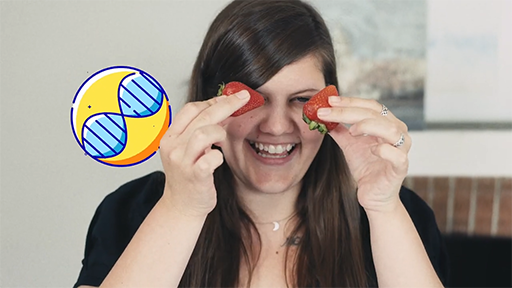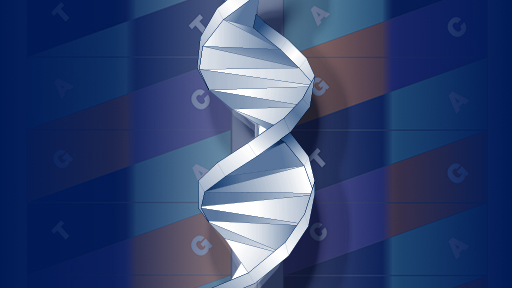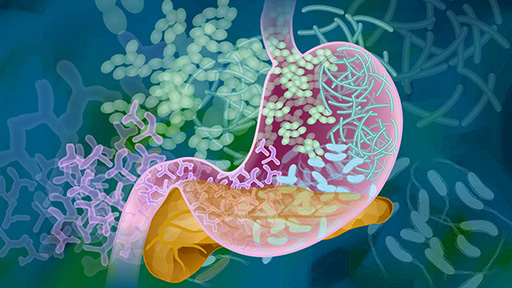DNA Day Activity Ideas
The DNA Day Team has curated a set of FREE educational materials for use in a variety of education and outreach activities and environments. We hope these activities will provide inspiration for hosting your own DNA Day activity.
Hands-on Activities for Festivals or Informal Learning
DNA Day Origami Activity
Create a paper DNA helix origami and bring to life the double helix structure of DNA in full color.
Make a Candy DNA Model from Science Buddies
Build the shape and structure of DNA using gummy sweets in this fun, and edible, activity.
Classroom Outreach Modules from North Carolina DNA Day
Bring to life various genetics topics in the classroom with modules designed for student outreach.
Coloring with Cell Science Coloring Book Pages from Cell Press
Color your favorite part of the cell with the Coloring with Cell coloring book pages.
Sequence Bracelets from the Wellcome Genome Campus
Craft a colorful bracelet of a DNA sequence from a variety of organisms, big and small.
Yuck! From the Smithsonian Science Education Center
Take the taste test in this activity to learn about genetic variation in tasting ability and how you compare to your classmates.
Lesson Plans/Curriculum for Classroom Environments
Food Allergies Lesson Plans from the National Human Genome Research Institute and the National Science Teaching Association
Share seven lesson plans with students exploring genetic and genomic concepts connecting the ban of certain foods in the cafeteria and classroom to food allergies.
Microbiome Lesson Plans by Alumni from the National Human Genome Research Institute's Short Course in Genomics
Study the microbiome in the classroom with four lesson plans inspired by lectures and resources shared at the Short Course in Genomics summer program.
Teaching Evolution through Human Examples from National Museum of Natural History
Teach evolution using four teaching units focusing on fascinating topics including adaptation, malaria, human skin color, and being human.
Visible Proofs: Forensic Views of the Body Lesson Plan from National Library of Medicine
Incorporate two lesson plans into the classroom where students explore DNA, various DNA typing techniques, and their applications in justice, while evaluating their benefits and potential misuses.
Teach.Genetics from the University of Utah
Access classroom materials and tools that bring to life genetics, bioscience and health in the classroom.
Lesson Plans from the Personal Genetics Education & Dialogue Project
Utilize the lesson plan database containing interactive resources for high school and college educators to engage their students in discussions of ethics and personal genetics.
Science Case-studies from the National Science Teaching Association
Access classroom materials and tools that bring to life genetics, bioscience and health in the classroom.
Finding Your Roots
Access classroom materials and tools that bring to life genetics, bioscience and health in the classroom.
Digital Media for Virtual Programs or Social Media
Talking Glossary of Genomic and Genetic Terms
Browse through nearly 250 terms explained in an easy-to-understand way by leading scientists and professionals at the National Human Genome Research Institute.
Resource library from Genome: Unlocking Life's Code
This resource library provides access to lesson plans, interactive digital media, student-written science articles, videos, illustrations and more about genetics and genomics.
Educational Videos from the National Human Genome Research Institute
Watch five educational videos about the Human Genome Project, analogies describing the genome, genetic testing and ancestry, the impact of genomic medicine on patients, and a playful animation about the genome and environment.
The Gene: An Intimate History from PBS, Ken Burns in the Classroom
Dive into a documentary weaving together science, history and personal stories to create a historical biography of the human genome.
BLOSSOMS Lesson Video Library from Massachusetts Institute of Technology
View video lessons created by teachers on a number of topics including lessons on DNA in the fields of human evolution, forensics, cancer biology and the study of animals.
Ask a Biologist from Arizona State University
Engage in biology learning by asking a biologist a question, accessing a toolbox of biology resources, listen to biology podcasts or watch YouTube videos.
Learn.genetics from the University of Utah
Learn about genetics, evolution, human health and more by viewing engaging multimedia and education resources.
Videos from Stated Clearly
Watch engaging animated videos that accurately explain the basics of genetics and evolution.
3D Animation Database from the DNA Learning Center
Get animated by browsing through the 3D animations database helpful for visualizing complex biological concepts.
Your Genome from Wellcome Connecting Science
Discover more about DNA, genes and genomes using this free collection of learning resources.
Last updated: March 26, 2025






